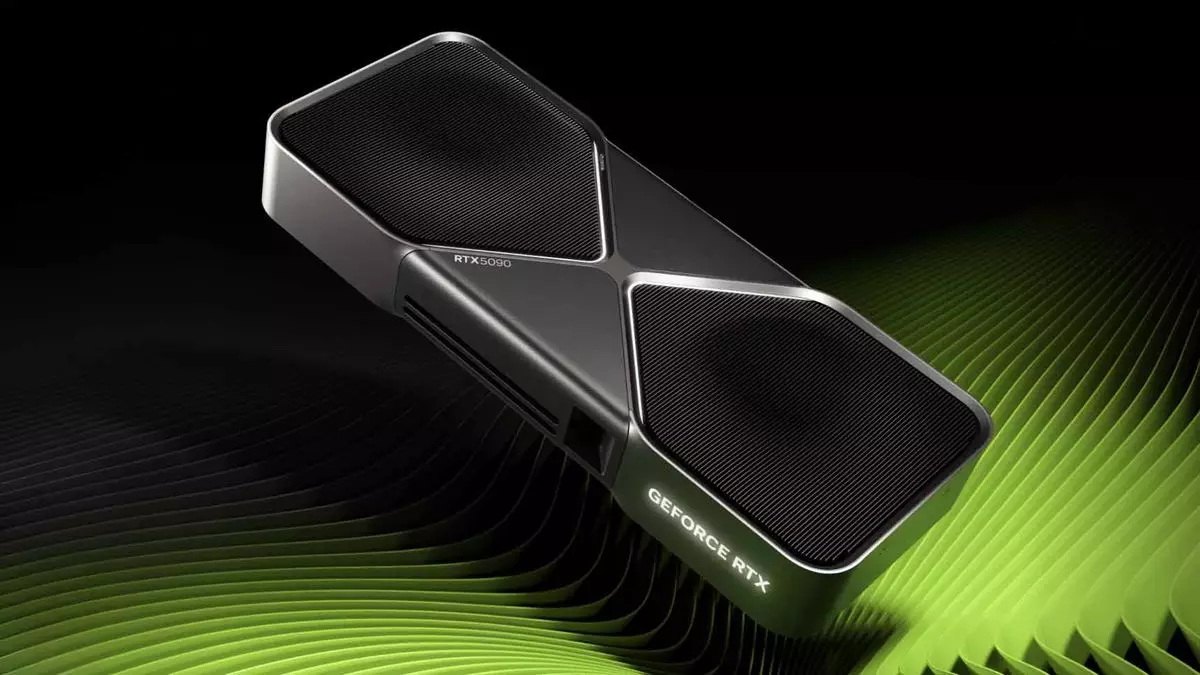The landscape of graphic processing units (GPUs) is perpetually evolving, with each new iteration promising unprecedented power and performance. The Nvidia RTX 5090 has emerged as a focal point of speculation and excitement, thanks in large part to a recent leak that has ignited discussions about its capabilities. At the heart of this buzz lies the revelation of an engineering board featuring the fully unlocked GB202 GPU, purportedly boasting a staggering 24,576 CUDA cores—a significant upgrade over the expected 21,760 cores of the retail version. This article delves into the implications of these findings for Nvidia and the broader GPU market, while contemplating the potential missed opportunities they represent.
Nvidia has long been known for its cutting-edge technology, and the leaked specifications of the RTX 5090 certainly do not disappoint. The revelation of 24,576 CUDA cores is indicative of a potential exponential leap in processing power, positioning the RTX 5090 far ahead of its predecessor, the RTX 4090, which features 16,384 cores. The implication is clear: this engineering board could represent a 50% increase in performance, permitting remarkable advances in gaming and computing applications alike.
Adding to the excitement, the card is rumored to be equipped with blisteringly fast 32 Gbps GDDR7 memory, as opposed to the 28 Gbps memory of the standard RTX 5090. This development could potentially enhance the memory bandwidth from 1,792 GB/s to 2,048 GB/s, enabling better data throughput for the increased number of CUDA cores. However, these specifications, while impressive, raise questions about Nvidia’s intentions; how much of this raw power will actually be available to consumers once the card hits the market?
The engineering board highlights Nvidia’s approach toward its product lineup: while they possess the capability to create extraordinary hardware, there is often a gap between the theoretical power of engineering designs and the actual specifications of retail products. The RTX 4090’s AD102 chip exemplifies this dilemma, having been “pegged back” by Nvidia, leaving many to wonder whether the company intentionally limits performance to segment the market or maintain competitiveness.
Interestingly, while rumors swirl regarding a potential 4090 Ti, which may offer enhanced specifications like the currently leaked RTX 5090, historical evidence suggests that Nvidia sometimes opts not to fully tap into the potential of what they devise. For instance, the existence of prototype 4090 Ti cards, though confirmed, did not culminate in a retail launch, possibly indicating that Nvidia’s strategy favors a gradual release of power to avoid saturating market demand.
The speculation surrounding the RTX 5090 comes at a time when AMD appears to be shifting its focus away from the high-end market segment with its upcoming RDNA 4 GPUs. This could imply that Nvidia faces even less competitive pressure than they did prior to the RTX 4090’s launch. In past cycles, competition has often driven manufacturers to push their limits. Yet, the apparent lack of serious competitors could lead Nvidia to once again undersell their flagship offerings.
Critics and enthusiasts alike have expressed concerns regarding the perceived underwhelming specifications of the RTX 5090. In recent days, numerous tech reviewers have voiced their disappointment with what they feel are lackluster specs, suggesting a missed opportunity for Nvidia to capture consumer excitement.
With all eyes on Nvidia, the pressure is mounting for the company to deliver a product that matches the expectations set by the leaked specifications. If Nvidia opts to roll out a variant of the RTX 5090 that taps into the full capabilities of the GB202 GPU—be it a potential ‘Ti’ model or a revamped Titan—there is a significant opportunity for the company to reassert its dominance in the high-performance GPU market.
Consumers are eager for innovation, and if Nvidia can unleash this potential, it may quell the growing discontent regarding the RTX series. High pricing may be an inevitable consideration, but with the right marketing narrative and robust performance metrics, the RTX 5090 could reshape Nvidia’s trajectory in a landscape fraught with apprehension.
As speculation continues, the question remains: Will Nvidia seize the opportunity to innovate or will they maintain the status quo? The future of the RTX 5090 and its successors could hinge on the answer.


Leave a Reply